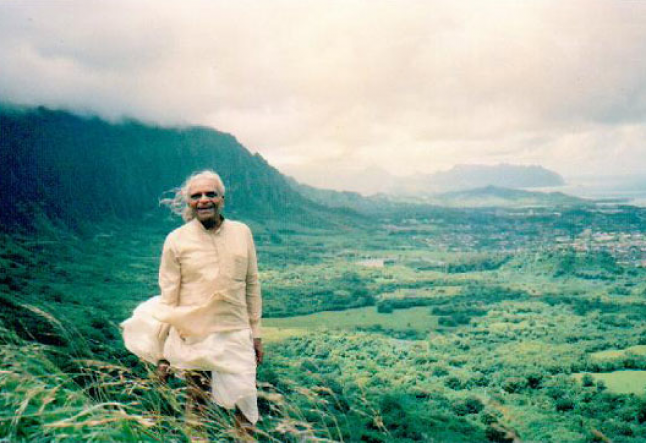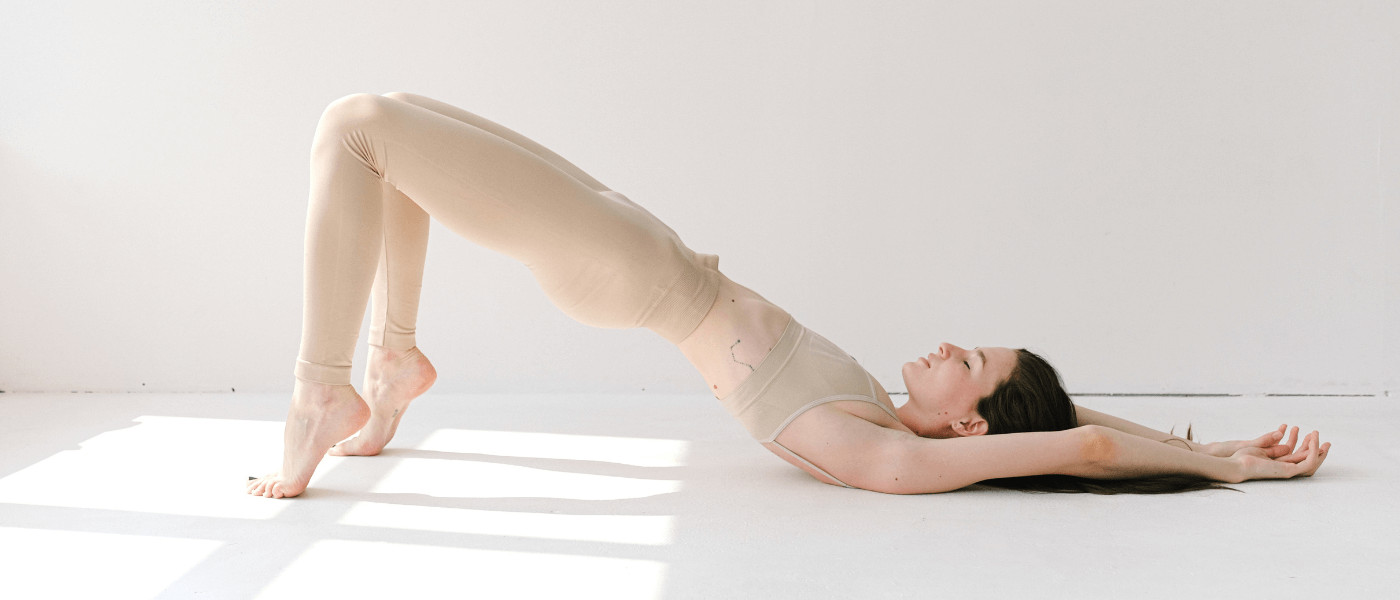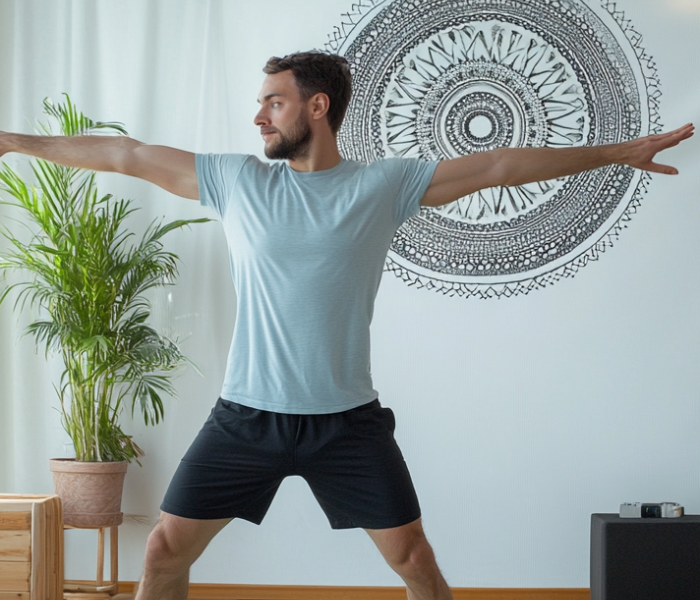Why every child needs Yoga: Life-changing benefits for kids

What if there were a simple practice that could help children manage big emotions, improve focus, build physical strength, and develop lifelong tools for well-being—all while having fun? Across schools, homes, and therapy centers worldwide, yoga is proving to be exactly that powerful resource for children facing today’s unique challenges.
In our fast-paced world, children face increasing pressures from multiple directions. Academic demands continue to intensify, while growing screen time not only limits physical fitness but also exposes children to constant social comparison.
Many children feel the pressure to measure up to unrealistic standards they see online, leading to anxiety and decreased self-esteem. Additionally, today’s children experience more scheduled activities and less unstructured play than previous generations, creating a perfect storm of stressors that can affect their physical and mental health.
Yoga provides a much-needed counterbalance to these modern challenges. Let’s explore how this centuries-old practice can support your child’s development, from improved physical health to enhanced emotional well-being and academic performance.
Main takeaways
- Yoga improves children’s physical health through enhanced strength, flexibility, and coordination
- Regular yoga classes boost mental health, self-regulation, and emotional resilience.
- Yoga helps children develop focus and concentration, leading to better academic performance.
- Children who practice yoga develop lifelong tools for stress management and self-awareness.
- Yoga can benefit children with specific conditions like ADHD and autism.
The magic of mindful movement: Understanding kids yoga
Picture this: a classroom of normally fidgety seven-year-olds lying peacefully in savasana, breathing deeply as they visualize positive thoughts. This scene, once rare in educational settings, is becoming increasingly common as yoga for children gains recognition for its numerous benefits.
Yoga isn’t just about physical postures—it’s a holistic approach to well-being that combines movement, breathing, and mindfulness practices tailored specifically for young, growing bodies and minds.
Unlike adult yoga classes that might focus on perfecting poses, teaching yoga to children emphasizes fun, creativity, and self-expression. Animal poses become adventures, breathing practices transform into games, and meditation takes the form of imaginative journeys.
By introducing yoga to kids, we’re teaching them more than just physical yoga poses—we’re giving them tools they’ll carry throughout their lives. The beauty of kids yoga is that it plants seeds of mindfulness, awareness, and self-discipline at an early age.
Yoga introduces children to cornerstone values such as:
- Non-harming (ahimsa)
- Truthfulness (satya)
- Moderation (brahmacharya)
- Cleanliness (saucha)
- Gratitude (santosha)
- Self-discipline (tapas)
These principles aren’t taught as abstract concepts but experienced through the physical practice, stories, and group activities that make up a typical yoga session.
The versatility of yoga makes it particularly valuable for kids—it can be practiced anywhere, from classrooms and living rooms to playgrounds and parks. All that’s needed is enough space for a child to stretch out, making it an accessible activity regardless of socioeconomic status or geographic location.

Benefits of yoga for kids: How yoga empowers Young bodies and minds
Physical health benefits
While yoga isn’t typically thought of as an aerobic workout, it offers numerous physical benefits for children’s growing bodies. Through various yoga poses, kids engage different muscle groups, develop proprioception (awareness of their body in space), and improve both dynamic and static balance.
The physical benefits of yoga for children include:
- Increased strength in core muscles, supporting better posture
- Enhanced flexibility without overstretching young joints
- Improved coordination and motor planning skills
- Development of body awareness and spatial orientation
- Better balance and stability
For athletic kids, yoga serves as excellent cross-training, helping to strengthen and stretch specific muscle groups that might be overtaxed or underdeveloped in their primary sport. Young runners find relief for tight hamstrings, basketball players gain shoulder mobility, and gymnasts develop controlled strength to complement their flexibility.
Even for kids who don’t consider themselves athletic, yoga provides a non-competitive way to engage in physical fitness. The focus on personal progress rather than comparison creates a safe space for kids to develop comfort with physical activity.
Emotional health and well-being
Children today face unprecedented levels of stress, with mental health challenges affecting younger age groups than ever before. Yoga provides accessible tools for emotional well-being that kids can use independently.
Through a consistent yoga practice, children develop:
- Awareness of their emotional states
- Vocabulary to express feelings
- Physical techniques to manage emotional intensity
- Resilience when facing challenges
- Self-regulation skills for big feelings
Yoga implements relaxation techniques, gentle stretching, and breathing exercises that help release tension held in the body. For kids who struggle to verbalize emotions, these physical practices offer an alternative pathway to emotional regulation.
The parasympathetic nervous system activation that occurs during yoga practice also supports healthy digestive system function, stabilizes blood sugar, and promotes overall health—physical manifestations of reduced stress that many children experience without fully understanding the mechanism.
Kids who practice yoga demonstrate greater emotional resilience—bouncing back more quickly from disappointments, managing frustration more effectively, and showing increased empathy toward others.
Improving focus and concentration
The connection between physical movement and cognitive function is well-established in neuroscience. Yoga takes this relationship further by combining physical yoga poses with mindfulness practices that directly support learning and school performance.
Through yoga, children develop mental clarity and emotional regulation essential for academic success.
This awareness is crucial because learning is directly tied to emotional state. When children experience stress or anxiety—in “fight or flight” mode—information cannot reach the prefrontal cortex where learning occurs, instead becoming blocked at the reptilian brain level focused on survival.
However, regulated breathing techniques learned in yoga can directly impact brain function. Deep, diaphragmatic breathing increases oxygen flow to the brain while activating the parasympathetic nervous system—the “rest and digest” mode that optimizes conditions for learning and memory formation.
Studies show that a regular yoga practice correlates with several academic benefits:
- Improved concentration and sustained attention
- Enhanced working memory capacity
- Better cognitive flexibility and problem-solving abilities
- Reduced test anxiety and performance stress
- Increased classroom participation and engagement
Low-stress students perform better academically. When children learn to manage their stress response through yoga, they can approach challenging academic material with greater resilience and cognitive resources.
Building self-esteem and confidence
Remember learning to ride a bike? That moment when the training wheels came off, and you realized you could balance on your own? Yoga offers children similar moments of achievement that build self-esteem.
When a child who has been working on balancing poses finally manages to hold Tree Pose for several breaths, the sense of accomplishment lights up their face. These small victories accumulate, fostering a genuine sense of self-respect and confidence that extends beyond the yoga mat.
Children transform from saying “I can’t” to “I’ll try” to “I did it!” Yoga teaches kids to persevere, be patient, and work toward their goals in a non-competitive environment where the journey matters more than the destination.
Unlike competitive sports, where success is measured by winning, yoga allows each child to progress at their own pace, celebrating personal improvements rather than comparing themselves to others. This intrinsic motivation proves far more sustainable for building lasting self-esteem.

Healing through movement: Therapeutic benefits for children with additional needs
Beyond the general wellness benefits already discussed, yoga shows particular promise for children with specific health conditions or developmental differences.
The therapeutic applications of yoga continue to expand as research demonstrates its effectiveness for various pediatric populations.
For children with ADHD
Attention deficit hyperactivity disorder affects approximately 9.4% of children in the United States. Studies suggest that yoga can help manage core symptoms by:
- Improving sustained attention and focus
- Reducing hyperactivity and impulsivity
- Enhancing executive function skills
- Providing tools for self-regulation
Teaching yoga to kids consistently helps them develop awareness of their energy levels and gives them concrete tools to self-regulate when they feel scattered or overstimulated.
For children with autism spectrum disorders
For children with autism, yoga offers benefits that address common challenges:
- Reducing anxiety through predictable routines
- Improving body awareness and motor coordination
- Providing deep pressure input through certain poses
- Creating a structured space for social interaction
Many occupational therapy practices now incorporate yoga as part of a comprehensive approach for children with sensory processing differences, finding that the combination of movement, breath awareness, and mindfulness supports integration of sensory information.
For children with anxiety or trauma
Yoga’s emphasis on present-moment awareness makes it particularly valuable for kids coping with anxiety or recovering from traumatic experiences:
- Breathe deeply to help activate the relaxation response
- Physical activity releases stored tension
- Mindfulness practices gently increase tolerance for uncomfortable sensations
- Predictable sequences create a sense of safety and control.
Trauma-sensitive yoga interventions help reduce hyperawareness and improve self-regulation in youth who have experienced difficult life events.
These specialized approaches prioritize choice, empowerment, and safety—creating environments where children can gradually reconnect with their bodies in positive ways.
Many healthcare providers now recommend yoga as one of several mind-body practices that can support children’s mental health, particularly for stress-related conditions.
For children with physical disabilities
Adaptive yoga practices make the benefits of yoga accessible to children with physical disabilities:
- Improved range of motion and flexibility
- Reduced muscle spasticity
- Better breath control
- Enhanced body awareness
- Increased confidence in physical abilities
For these children, yoga offers a rare opportunity to experience movement in a supportive, non-competitive environment where modifications are celebrated rather than seen as limitations.
Bringing yoga to life: Simple ways to practice with children
Introducing yoga to children doesn’t require elaborate equipment or extensive training. Simple yoga exercises and games can be incorporated into daily routines at home, in classrooms, or during after-school programs.
How to get started at home
Begin with these accessible practices:
- Morning Sun Salutations: Start the day with 3-5 rounds of modified sun salutations to energize the body.
- Bedtime Relaxation: End the day with child’s pose and gentle twists to release tension.
- Breathe Deeply: Take breathing breaks during homework time—three deep breaths can reset focus.
- Family Yoga Time: Designate 15 minutes on weekends for family yoga, where each member gets to lead a favorite pose or yoga story.
The beauty of practicing yoga at home is that it becomes part of family culture. When kids see adults in their lives prioritizing mindfulness and movement, they naturally integrate these practices into their own routines.
Online resources, like those found at kidsyogastories.com, offer abundant guidance for parents and caregivers looking to share yoga with their children. From illustrated pose cards to kid-friendly yoga videos, tools exist for every age group and interest level.
How to get started in educational settings
Schools increasingly recognize the value of incorporating yoga into their curriculum—whether as standalone classes or as brief movement breaks throughout the day.
Effective approaches include:
- Yoga Corners: Designating a small area in the classroom with visual pose guides where children can go when they need to recenter.
- Movement Breaks: Integrating 3-5 minute yoga sequences between academic subjects.
- Mindful Moments: Beginning or ending the school day with breathing and simple stretches.
- Emotion Regulation Stations: Creating visual aids that pair yoga poses with emotional states (e.g., “When I feel angry, I can try lion’s breath”).
Teachers report that even brief yoga interventions throughout the school day can substantially improve classroom management, student focus, and the overall learning environment.
Yoga for every age: Tailoring practice to developmental stages
Contrary to what some might think, there’s no “right age” to start yoga. The practice can be modified to work for children at every developmental stage, from toddlers to teenagers.
For toddlers and preschoolers (Ages 2-5)
At this age, yoga should be predominantly playful and imaginative:
- Short sessions (5-15 minutes)
- Animal poses with sounds and stories
- Follow-the-leader movement games
- Simple breathing visualizations (blowing up a balloon, smelling flowers)
- Partner poses with parents or caregivers
For elementary age children (Ages 6-10)
As children develop longer attention spans and stronger bodies, their yoga practice can evolve:
- Longer sequences (15-30 minutes)
- Theme-based classes (jungle adventures, ocean explorations)
- Introduction to balancing poses and mild inversions
- Basic breathing techniques with counting
- Guided visualizations and short meditations
For tweens and teens (Ages 11+)
Older children benefit from more technical instruction and understanding the “why” behind the practice:
- Full-length classes (30-45 minutes)
- More challenging physical postures
- Specific breathing techniques for different emotional states
- Meditation practices for focus and stress reduction
- Discussion of yoga philosophy in age-appropriate terms
The key is to meet children where they are. A four-year-old might practice “frog pose” while making ribbit sounds, while a fourteen-year-old might learn how the same pose (malasana) aids digestion and stretches the hips. It’s the same pose with different entry points.
Beyond the mat: Carrying yoga’s gifts into everyday life
Yoga offers children a unique combination of physical activity, mindfulness practice, and life skills that support their development holistically.
As both an immediate intervention for specific challenges and a preventative practice for lifelong well-being, yoga provides tools that benefit children across contexts—from classrooms and playgrounds to family life and future careers.
Introducing children to yoga gives them access to:
- Physical practices that strengthen and balance their growing bodies
- Mental techniques that improve focus and academic performance
- Emotional tools for self-regulation and resilience
- Social skills like empathy, communication, and cooperation
- Philosophical principles that guide ethical decision-making.
In a world where children face increasing pressure to perform academically while navigating complex social landscapes both online and offline, yoga offers a sanctuary—a place to connect with themselves, develop confidence in their abilities, and cultivate the inner resources they need to thrive.
Whether a child practices for five minutes or fifty, once a week or daily, the benefits accumulate over time, creating neural pathways and habits that support lifelong health and happiness.
When we teach children yoga, we’re not just helping them touch their toes—we’re helping them touch their potential.

FAQs
Yoga develops multiple dimensions simultaneously: physically (coordination, balance), cognitively (attention, memory), emotionally (self-regulation, stress management), and socially (empathy, cooperation). These integrated outcomes support academic success while building essential life skills that standard curricula often overlook—equipping children to thrive both in and beyond the classroom.
Absolutely! Yoga isn’t just about flexibility—it encompasses breathing, mindfulness, and philosophy. All children benefit regardless of their natural abilities. Many become more flexible through practice, but that’s just a bonus. Yoga is about exploration, not touching your toes!
Yes. Children who practice yoga demonstrate improved behavior and reduced cortisol levels. Yoga builds self-regulation skills that transfer to daily challenges. Regular practice develops emotional awareness, impulse control, and focus. Kids typically manage frustration better, follow directions more easily, and make more thoughtful choices.
Starting small is perfect! Even 2-5 minutes daily makes a difference! Incorporate yoga into existing routines—morning stretches, bedtime breathing, or mindful moments. Consistency in small doses beats occasional longer sessions, and children naturally extend practice as interest grows.
Not at all. Modern yoga in children’s settings is entirely secular, focusing on movement, breathing, and mindfulness without religious teachings. People from all faith backgrounds practice yoga worldwide, as the physical postures and breathing exercises are simply tools for well-being.
Any age is perfect! Even toddlers benefit from simple breathing games, animal poses, and movement activities. Starting young helps wire developing brains for mindfulness and self-regulation from the beginning. Early exposure cultivates body awareness, language development, and parent-child bonding, creating neural pathways that support future learning and emotional regulation.
Yoga provides essential tools for children navigating today’s fast-paced world. The main benefits include:
Improved physical health through better strength, flexibility, and coordination
Enhanced emotional regulation and stress management skills
Increased focus and concentration leading to better academic performance
Development of self-awareness and self-esteem
Creation of healthy habits and mindfulness practices that last a lifetime






Wow I really loved this article. I’ve been wondering if yoga was ok for young kids and this actually answered a lot of my doubts. My daughter is 6 and super energetic, I think this could help her calm down a bit and also build some focus. Didn’t even think about how it can help with emotional balance too! Def gonna try a few poses together at home. Thanks for sharing this 🙏
I’m so glad the article resonated with you! Six is such a beautiful age to introduce yoga – kids pick it up so naturally.
Starting with a few simple poses together at home can make it feel playful while still planting the seeds of focus and emotional balance.
It’s amazing how even short, gentle sessions can create a calming ripple through their day. Wishing you and your daughter lots of fun and connection on the mat!
This article really opened my eyes. I never thought about how much kids can benefit from slowing down and connecting with their breath. The way you explained it made yoga for children feel less like a ‘cute activity’ and more like a real tool for life.
It actually made me reflect on how different my own childhood might’ve been with practices like this. Now I’m seriously thinking of signing my son up for a class.
This was such an eye-opener. I always thought yoga was more of an adult thing, but the way you explained how it helps kids handle stress, build focus, and feel more confident really hit me. It made me realize how much little ones carry too, even if they don’t always say it. Now I’m thinking of finding a gentle class for my daughter to try. Feels like a gift you can give them that lasts a lifetime.